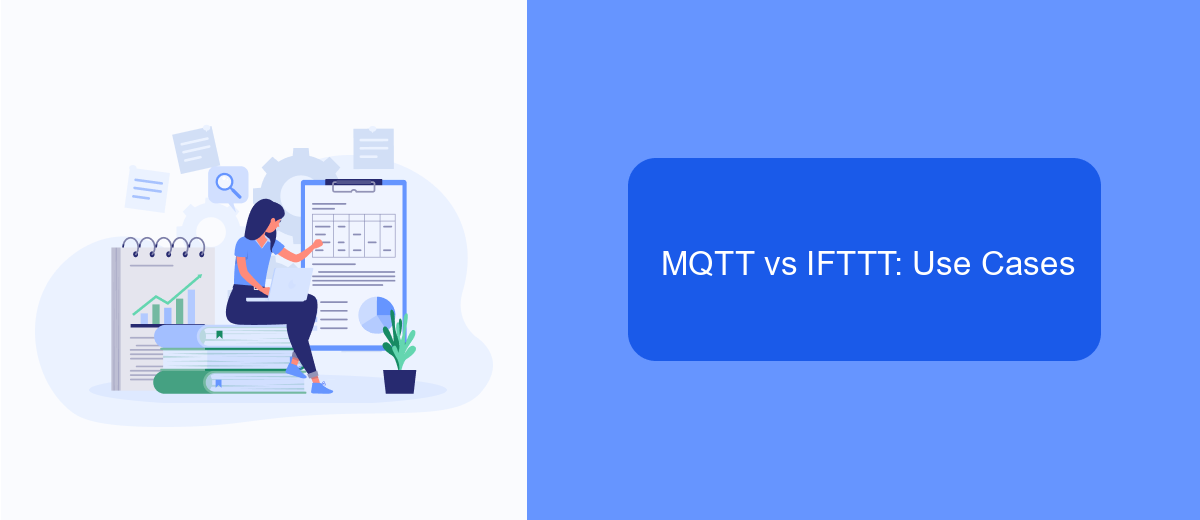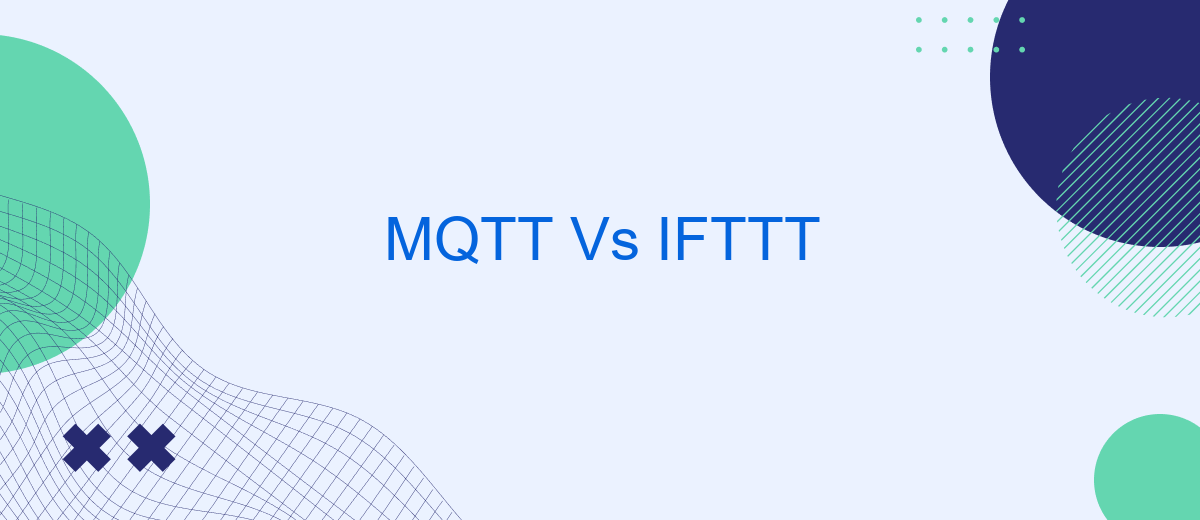In the evolving landscape of IoT, choosing the right communication protocol is crucial. MQTT (Message Queuing Telemetry Transport) and IFTTT (If This Then That) are two popular options, each with unique features and applications. This article delves into the strengths and weaknesses of both, helping you determine which is best suited for your specific needs and projects.
MQTT Overview
MQTT (Message Queuing Telemetry Transport) is a lightweight messaging protocol designed for small sensors and mobile devices. It operates on top of the TCP/IP protocol and is known for its low bandwidth usage and minimal battery consumption, making it ideal for Internet of Things (IoT) applications.
- Lightweight and efficient
- Low bandwidth usage
- Operates over TCP/IP
- Supports a variety of devices
- Ideal for IoT applications
MQTT is highly scalable and can handle thousands of connected devices with ease. It uses a publish/subscribe model, allowing devices to communicate with each other without needing a direct connection. This makes it easier to manage and integrate various IoT devices. For instance, services like SaveMyLeads can help streamline the integration process by automating data transfer between MQTT-enabled devices and other platforms, ensuring seamless communication and data flow.
IFTTT Overview

IFTTT (If This Then That) is a powerful automation tool that connects various apps, devices, and services to create seamless workflows. By setting up simple conditional statements called "applets," users can automate tasks such as sending notifications, updating social media, or controlling smart home devices. With an intuitive interface, IFTTT allows both tech-savvy users and beginners to enhance their productivity and convenience without extensive programming knowledge.
One of the key features of IFTTT is its extensive library of pre-built applets, which can be easily customized to fit individual needs. Additionally, services like SaveMyLeads can further enhance the automation experience by providing advanced integration capabilities. SaveMyLeads allows users to connect various platforms and automate lead management processes, making it a valuable tool for businesses looking to streamline their operations. Overall, IFTTT offers a versatile solution for integrating and automating a wide range of services and devices, making everyday tasks more efficient and interconnected.
MQTT vs IFTTT: Advantages and Disadvantages

MQTT and IFTTT are popular tools for connecting and automating devices, each with its own set of advantages and disadvantages.
- MQTT Advantages:
- Low latency and high reliability.
- Efficient bandwidth usage.
- Ideal for IoT applications.
- MQTT Disadvantages:
- Requires technical expertise to set up and manage.
- Less user-friendly for non-developers.
- IFTTT Advantages:
- User-friendly interface.
- Wide range of pre-built integrations.
- No coding required.
- IFTTT Disadvantages:
- Higher latency compared to MQTT.
- Limited customization options.
- Dependent on third-party services.
Choosing between MQTT and IFTTT depends on your specific needs. For robust IoT applications requiring low latency, MQTT is ideal. For simpler, user-friendly automation, IFTTT is more suitable. Tools like SaveMyLeads can help streamline integrations, making it easier to connect various services without extensive coding knowledge.
MQTT vs IFTTT: Use Cases

MQTT and IFTTT serve different purposes and cater to varied use cases in the realm of automation and IoT. MQTT, a lightweight messaging protocol, is ideal for real-time communication between devices. It excels in scenarios requiring low latency and reliable message delivery, such as smart home systems, industrial automation, and telemetry data collection.
On the other hand, IFTTT (If This Then That) is a web-based service designed to create chains of conditional statements, known as applets. It is best suited for integrating various online services and automating tasks based on specific triggers. For instance, you can use IFTTT to automate social media posts, control smart home devices, or receive notifications for specific events.
- MQTT: Real-time device communication, smart home automation, industrial monitoring.
- IFTTT: Web service integration, social media automation, smart home control via applets.
For businesses looking to streamline their integrations further, services like SaveMyLeads can be invaluable. SaveMyLeads simplifies the process of connecting various platforms, ensuring seamless data flow and automation without extensive technical expertise. Whether you choose MQTT or IFTTT, leveraging such tools can enhance your automation strategy.
MQTT vs IFTTT: Which One is Right for You?
When deciding between MQTT and IFTTT, it's essential to consider your specific needs. MQTT is a lightweight messaging protocol ideal for IoT applications. It's known for its low bandwidth usage and real-time capabilities, making it perfect for scenarios where devices need to communicate quickly and efficiently. On the other hand, IFTTT (If This Then That) is a service that allows users to create chains of simple conditional statements, known as applets. IFTTT is user-friendly and doesn't require programming skills, making it accessible for automating various online services and smart home devices.
If you need a robust, low-latency solution for device-to-device communication, MQTT is likely the better choice. However, if you're looking for an easy way to integrate multiple online services and automate workflows without deep technical knowledge, IFTTT might be more suitable. Additionally, services like SaveMyLeads can help streamline the integration process, offering ready-to-use solutions for connecting different platforms. Ultimately, the right choice depends on your technical requirements and ease of use preferences.
- Automate the work with leads from the Facebook advertising account
- Empower with integrations and instant transfer of leads
- Don't spend money on developers or integrators
- Save time by automating routine tasks
FAQ
What is the primary difference between MQTT and IFTTT?
Can MQTT and IFTTT be used together?
Which is better for IoT applications, MQTT or IFTTT?
Can I use IFTTT to automate tasks involving MQTT?
How do I choose between MQTT and IFTTT for my project?
What do you do with the data you get from Facebook lead forms? Do you send them to the manager, add them to mailing services, transfer them to the CRM system, use them to implement feedback? Automate all of these processes with the SaveMyLeads online connector. Create integrations so that new Facebook leads are automatically transferred to instant messengers, mailing services, task managers and other tools. Save yourself and your company's employees from routine work.

